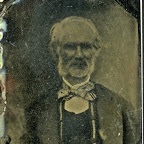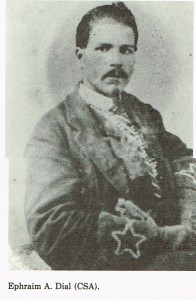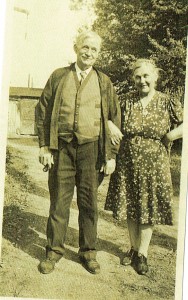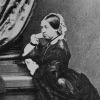Your Stories: Tackling the Welsh Medievel Tree
We love hearing about stories from the Geni community about their journeys to uncover their family history. Today we’d like to share Anne Brannen’s story. A recent addition to Geni’s team of dedicated volunteer curators, Anne shares her family stories and the path that led her to tackle the medieval lines of the World Family Tree.
After 22 years of working in Pittsburgh teaching at Duquesne University, Anne is now living a semi-retired life while her wife goes to law school in a full house that includes 3 herding dogs, 2 cats, and 2 parakeets.
“I’m a sixth generation Texan on my father’s side; by the time I was 8, we were in New Mexico. I spent 16 years in San Francisco Bay Area, the last 6 of them working on my doctorate in Medieval Literature and Medieval Studies at Berkeley.
As an undergraduate and master’s student, I focused on Anglo-Saxon studies. For my doctorate, I moved on down into the later Middle Ages and focused on medieval drama and English parish history.”
Anne had a strong sense of her family history through the many stories told.
Martin Parmer (Palmer) signed the Texas Declaration of Independence
“On my father’s side, I come from a long line of historians/story tellers. I grew up knowing that one of our ancestors had signed the Texas Declaration of Independence; that others had come to Texas on the run from shooting up a school board meeting in Sugartown, Louisiana (the Rawhide Fight); that Uncle Eph had been wounded in the neck fighting in the Devil’s Den at Gettysburg with Hood’s Texas Brigade (after which he used to terrorize his nieces and nephews at the dinner table, dribbling stuff out of his neck); that Grandpa Walker had been in prison, sentenced to death for murder, but finally got out on the governor’s pardon – these stories seemed infinite. Telling them to me was how my grandfather entertained me when I came to visit.”
Ephraim Dial fought in Devil’s Den at Gettysburg
The stories from her mother’s side of the family seemed a little less exciting.
“On my mother’s side, the stories were not so colorful – her family stories concerned her Norwegian grandmother fooling several generations of family members into thinking she made her own fiskeboller, though really her ship captain brother was bringing her cans of them from Norway.“
Or perhaps not.
Robert G. Elliott
“No, wait,…I take that back, [my mother’s] grandfather Robert G. Elliott was one of the most famous executioners in American history, which I suppose is fairly colorful.”
Her mother’s family knew who they were and where they came from thanks to years of genealogy research by her grandmother and great aunt.
“[They] worked on the family genealogy, visiting England and Ireland to work with the records. [My great aunt], a noted illustrator (Gertrude Espenscheid), drew an involved and detailed family tree, which many of us have copies of. Later, I inherited much of my grandmother’s materials, and it’s then that I started writing things out, putting things together, and getting more and more interested in the lines and the history behind the family.”
Reflecting on the paths taken by both sides of her family, Anne states,
“My family, through my Southern father and my Northern mother, constitute a little picture of the history of American colonization and history, the times that families moved, the places they moved to, the things they did for their livings. It amuses me that my mother and father, with such seemingly different histories, are 22nd cousins; their histories split back in the Middle Ages, but they ended up winding them back together.”
Connecting to new cousins
Already armed with some knowledge of her own family heritage, Anne was introduced to a wider world of genealogy offered by Geni’s World Family Tree.
“Though a family member made a profile for me on Geni many years ago, I didn’t get to know Geni until later, when an old friend and I wanted to find out what our relationship was. To do that, I had to hook into the World Family Tree. And that was fascinating. The long lineage wasn’t a surprise – but all those cousins!
I loved the idea of connecting everybody that could get connected. And I started working not just on my own little piece of the tree, but on putting in my cousins and my cousins’ families. Then I did a bit of work in the medieval pieces of the tree.”
Diving into the Welsh medieval tree
It was the Welsh that caught her attention. This was an area of the tree that presented its own set of challenges.
“Not surprisingly, the Welsh medieval tree presents many challenges for many Geni users. The language is unfamiliar to English speakers; the naming conventions (though common throughout the rest of Europe until recently) are not English conventions. The profiles are easily confused. And to top it all, the medieval Welsh genealogies aren’t ‘full,’ since that wasn’t what they needed to be, and are often contradictory.”
Before becoming a curator, Anne concentrated on straightening out the various misspellings, simply in an effort to get profiles more easily matched and searched. She merged duplicates when they appeared while working on making the Welsh names make sense.
“I was hooked. For me, now, it’s not so much my own piece of the tree that interests me. I work on it, sure, but it’s the World Family Tree that I love. The collaboration on Geni is crucial to me. Certainly, it can seem easier to just make my own trees and not compromise and discuss the sources and how to interpret them. But for a World Family Tree, that’s crucial. Nobody creates the genealogical World Family Tree on their own, anymore than the ancestors created the physical one by themselves. We work together. And because of that, I have to pay more attention to my argumentation and my use of evidence. Why believe this manuscript and not this one? What’s my argument for filling in the gaps? That kind of scholarly work is beloved to me.”
Once Anne became a curator, she was given the tools need to help ensure the quality and accuracy of the World Family Tree, while also making it easier to help others in the Geni community.
“Being a curator means that I am able to be even more helpful to the World Family Tree itself, and to Geni users. I like to explain things; it’s lovely to be able to continue teaching, which I get to do in bits now. I enjoy working with other users and curators, figuring things out, explaining, learning.”
Advice to beginning researchers
For those just starting to discover their family history, Anne advises,
“Pay attention to the sources. Sometimes we have family stories, and they matter, and we should follow them up, but sometimes they are just that – stories, and not history. (I was shocked, really, to discover that the Rawhide Fight was a real event; I’d assumed that my family made it. Nope.) We follow them up, and we tell them. Sometimes we find connections on the personal trees that other people have put on the web – and that can, like our family stories, point us in useful directions. But the web trees – unless they are backed up with sources such as censuses, birth and death records, court disputes, wills or (if you’re going back that far) herald’s visitation records – are family stories.
And be prepared to let go of family stories, and cherished ideas. But be prepared also to accept all those wonderful distant cousins.”
Thank you Anne for sharing your story with us! Do you have a story to share? Email us at community@geni.com.
All photos courtesy of Anne Brannen











 Genealogy Discussions
Genealogy Discussions Genealogy Projects
Genealogy Projects Popular Genealogy Profiles
Popular Genealogy Profiles Surnames
Surnames The Geni Blog
The Geni Blog The World Family Tree
The World Family Tree